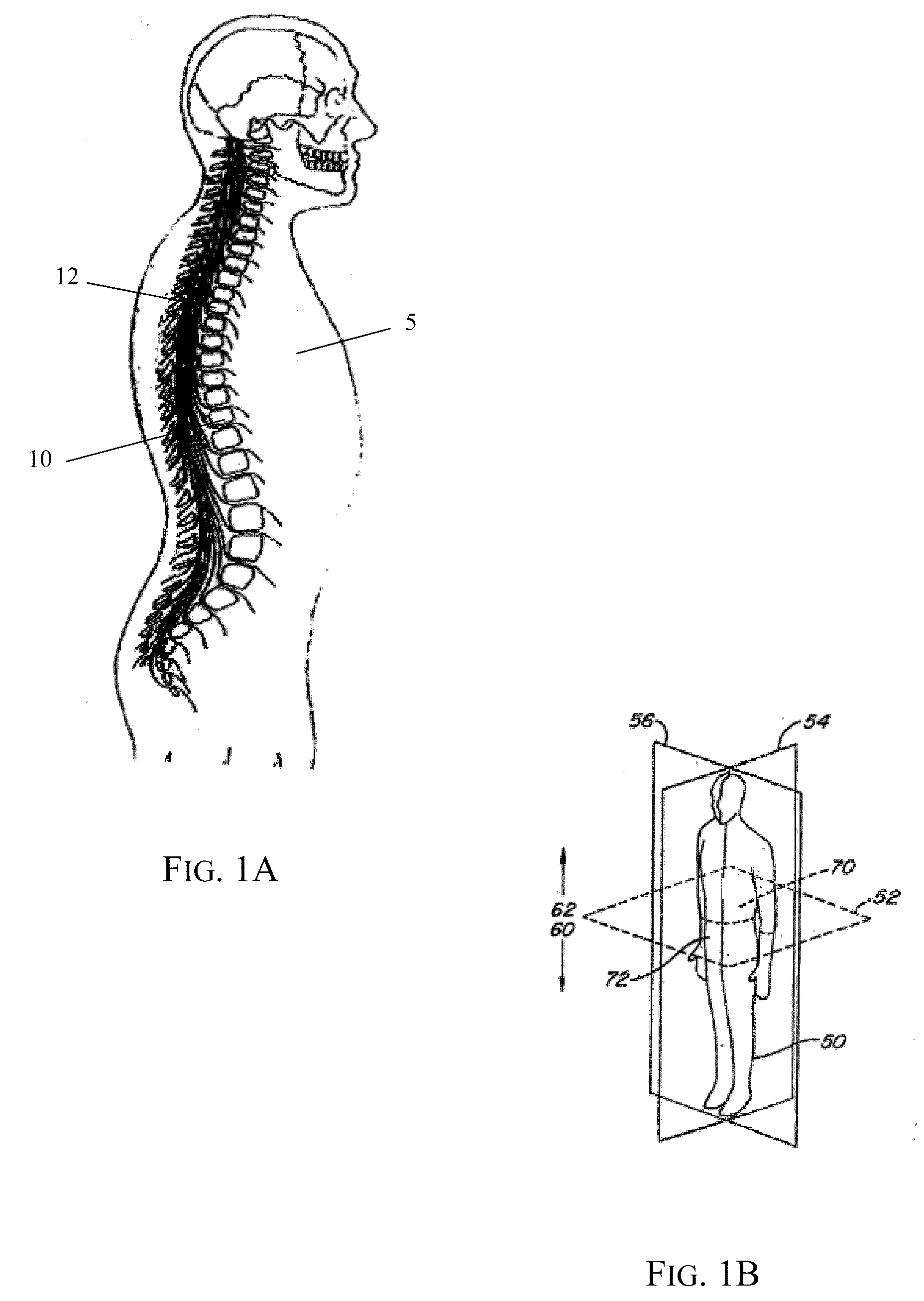Implantable neural prosthetic device and methods of use
a neural prosthetic and implantable technology, applied in the field of implantable neural prosthetic devices and methods of use, can solve the problems of device being slowly pushed out of position in the tissue, and affecting the patient's comfor
- Summary
- Abstract
- Description
- Claims
- Application Information
AI Technical Summary
Benefits of technology
Problems solved by technology
Method used
Image
Examples
Embodiment Construction
[0030]The invention provided herein comprises for a device for detecting the electrical activity of neural tissue. In some aspects, the device is capable of stimulating, modulating and suppressing neural tissue.
[0031]The spinal cord is a collection of neurons that travels within the vertebral column and is an extension of the central nervous system. Within the spinal cord is grey matter surrounded by white matter. The spinal cord extends from the brain and is enclosed in and protected by the bony vertebral column. In detecting neural activity from the spinal cord, and stimulating neural tissue, conventional methods suffer the drawback of either needing invasive surgery to implant the neural device or lack of sensitivity of the device.
[0032]A body cavity 5 with spinal column is shown in FIG. 1A. The devices of the invention are designed to interact with the human spinal column 10, as shown in FIG. 1A, which comprises of a series of thirty-three stacked vertebrae 12 divided into five ...
PUM
 Login to View More
Login to View More Abstract
Description
Claims
Application Information
 Login to View More
Login to View More - R&D
- Intellectual Property
- Life Sciences
- Materials
- Tech Scout
- Unparalleled Data Quality
- Higher Quality Content
- 60% Fewer Hallucinations
Browse by: Latest US Patents, China's latest patents, Technical Efficacy Thesaurus, Application Domain, Technology Topic, Popular Technical Reports.
© 2025 PatSnap. All rights reserved.Legal|Privacy policy|Modern Slavery Act Transparency Statement|Sitemap|About US| Contact US: help@patsnap.com



